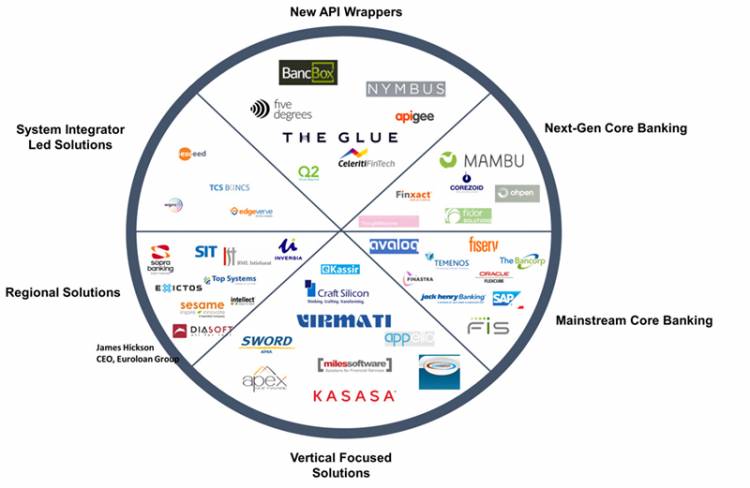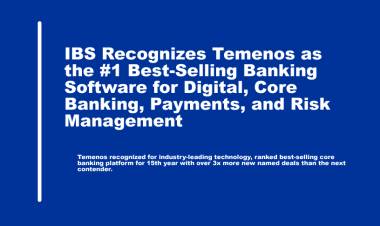
What is a core banking system?
Core Banking System: The central Bank Systems that has a primarily focus on automating the operational management of a financial institution, that is, those that provide services to the essence of the financial business operations, are called Core Banking Systems. In other words, a back-end system that processes banking transactions across and serve the various branches, channels and customers of a bank.
Today’s Banking as a business has grown tremendously and transformed itself from only a deposits, loan providing system to a service oriented, customer centric ecosystem which provides an entire gamut of products and services under a wide umbrella.
Core banking is now also being extended to address the requirements of corporate clients and provide for a central comprehensive banking solution.
A Digital core banking offer the following advantages to the bank:
- Improved operations which address customer demands and industry consolidation;
- Errors due to multiple entries eradicated;
- Easy ability to introduce new financial products and manage changes in existing products;
- Seamless merging of back office data and self-service operations.
Good Bank Banking Systems are generally modular, parametric, based on a platform with a clear objective to allow FIs to improve their operations and services, reduce costs, facilitate interoperability and support institutional growth.
Therefore, the Core Banking System represents the heart of the operation of all FI, and the decision to select and implement one represents a challenge in terms of flexibility, scalability, functionality and investment.
One of the main factors that strongly support the FI’s objective of achieving this much-needed efficiency and the possibility of providing better products and services while reducing costs, is to have a Banking Core.
Any process of change of core (total or partial) or technological update that must be done in an FI must necessarily be based on good practices, on a methodology, that allows to put order and execute in a controlled way the large amount of tasks that must be performed.
Characteristics of a Banking Core. Things to look for when evaluating.
Some of the main characteristics that all Core Banking at present should at least meet:
Reliability: A Core Banking should be designed to support demanding volumes and high transactional burden (millions of daily transactions).
Availability: Customers of a bank should have the possibility of accessing their financial services 24 hours a day, 365 days a year.
Accessible: The different products and services must be available to users and customers through any channel (multichannel).
Scalable: you must be prepared to grow with the IFI, whether it is an institution with a small network of offices or an institution with an extensive network of offices and IFI service through multiple channels.
SOA architecture: allow interoperability using industry standards such as web services.
Security: Allow customers and users of Core Banking applications to carry out their transactions in a secure manner and in turn comply with the guidelines given by the control bodies
360-degree view: The Banking Core must maintain an accessible database, and in turn allows a 360-degree view of the FI.
Parameterizable and Flexible: The more parameterizable the application or module is, the less time is required to bring new products and services to the market (time to market) and less dependence on the IT area of the FI.
Online and real time: Have the information updated online and real time instantly anywhere and where you need it.
The Core Banking Components
Basically, a Banking Core is composed of the technical architecture that supports it and the applications, modules, or set of functionalities built in that support the business operations of an FI.
The Main modules of a Banking Core.
A banking application contains modules or functionalities that allow the operation of an FI to be covered in such a way that it can provide banking products and services to its clients and at the same time comply with all legal local and international regulations.
These set of features are included in the main system built that enclose a Banking Core and should be accessible from any of the bank branches or electronic channels.
- General parameters: Manage general parameters used in the application. Example: countries, cities, provinces, cantons, branches, offices, currencies, types of credit, calculation bases, etc. Some Core have features for the modification and creation of new screens and transactions through parameterization or configuration.
- Securities: Component that is based on the parameterization of users, profiles, transactions, authorized amounts, work schedules, etc., normally regulated by the control entities in relation to access permits.
- Customer/Clients: Module that manages the information of natural and legal clients with their different levels of information, which includes their signatures, stamps and photography; the most up to date have biometric information (fingerprint, iris of the eye) for access control and transaction execution permits.
- Accounting: Allows the registration, control and monitoring of all accounting processes. Most core banking support automatic accounting of different banking products, in some cases such accounting is done in batch and in others it is done online.
- Fees: Allows centrally and parametrically manage rates / costs such as: charges, taxes, commissions, fees, etc., which will be applied to banking products.
- Credit Origination: Registers, through parametric process flows, the processes of pre-qualification, analysis and approval of credit applications until they reach their instrumentation, allowing to obtain management indicators of the different processes. Some current applications already have BPM tools and integrated document management.
- Loans: Manages the active operations of the financial institution, configurable, easy to create different lines of credit and different types of loans: consumer, commercial, mortgage, security, micro-credits.
- Guarantees: Manages various types of guarantees associated with customers, which can support one or more credit operations.
- Accounts in sight: Manage online and in real time the Current Accounts and Savings Accounts of the institution. Parametrizable, you can create differentiated products in different currencies, record and manage your movements and balances.
- Funds Transfer: Manages various types of transactions associated with customers, which can support one or more Account operations.
- Electronic Signatures: Module that allows the digitalization of the signatures and / or stamps of the clients of the institution, for later consultation by other modules of the system. Term Deposits: Registers and manages the fixed-term investments of the clients of the institution.
- Branch / Teller: Registers the transactions executed by the clients on the different banking products. Some applications handle the multi-box concept: several sources of funds are allowed, for several destinations from the same screen. It allows the opening and closing of boxes and branches, armored handling, etc.
- Regulatory Reporting: Module that allows the different structures and reports requested by the different control entities to be issued quickly and safely.
- Channel Banking: Module that through the Internet,mobile,Kiosk and IVR allows customer of the institution to carry out financial transactions such as balance inquiries, transfers, loan payments, payment of services, etc.
In addition to these modules, the FI's need some other solutions or systems that allow them to complete their entire operation, depending on the type of Bank or where they focus their business. Some core banking solutions, few, offer a complete suite that includes the modules and all or some of those mentioned below.
- Risks management: Suite of modules that allow a better management, administration and strategic decision-making on risks, generally they must comply with the rules of Basel.
- Financial Risk: Credit, Market, Liquidity and Rate Risk.
- Operational Risk: control the possibility of occurrence of financial losses, which may be caused by failures of processes, people, internal systems, technology, including the occurrence of unforeseen external events.
- Business Intelligence (BI): A tool that facilitates the analysis of customer information through multidimensional information (cubes)
About the Architecture.
The architecture used in a banking core must be robust, with a consistent technological structure, which allows the increase in productivity, reduce costs through greater efficiency, ease of interoperability, be independent to add new functionalities quickly reducing maintenance costs and improving The Time To Market.
In terms of software, it is increasingly common to hear the word "architecture," which refers to the structuring of the system that, for logical reasons, is created in stages prior to its development.
Importance of software architecture.
At present, the software architecture is the basis of any banking application, it is the way in which the system is structured and will allow its evolution over time, it has a direct impact on the final ability to satisfy the terms of quality decorate banking.
Some of the attributes that the architecture points out and that measure the quality of the system are:
The performance, which must be directly related with the response time of the system to the requests made by the user.
Usability, which is nothing more than the level of simplicity of performing operations with the system for users.
Modifiability, which is nothing more than the simplicity of being able to introduce changes in the system.
The architecture used in a banking core is directly proportional to its quality, therefore, the architecture and quality attributes must be part of the non-functional requirements of the banking core.
Any FI must assess before its acquisition and verify that it is aligned with its technological strategy and with its strategic plan.
Key factors for success in the implementation of a banking core.
Permanent commitment of the senior executives of the FI and their timely participation throughout the selection, evaluation and implementation project.
- Strong leadership in terms of vision, knowledge and experience.
- Timely decision making at all levels.
- Human Capital, Involve the best resources in the areas of systems, processes, business and functional.
Minimum features of a Core Banking Solution:
- Customer-On Boarding.
- Managing deposits and withdrawals.
- Transactions management.
- Calculation and management.
- Payments processing (cash, cheques /checks, mandates, NEFT, RTGS etc.).
- Customer relationship management (CRM) activities.
- Designing new banking products.
- Loans disbursal and management.
- Accounts management
- Establishing criteria for minimum balances, interest rates, number of withdrawals allowed and so on.
The most commun modules that typically make up a banking core system are:
Deposit Management
- Demand deposit account
- Savings account
- Term deposit accounts
- Cash management for corporates
- Liquidity management for corporates
Loans Origination
- Loans calculator
- Credit evaluation
- Conveyancing
- Loans disbursement
Credit Management
- Credit administration
- Credit risk assessment
- Credit risk monitoring
- Credit review
- Litigation
Debt Collection
- Management of delinquent accounts
- Loans recovery
- Litigation
Trade Finance
- Documentary credit
- Documentary collection
- Shipping guarantee
- Bank guarantee
Treasury
- Liquidity and funds management
- Asset Liability Management (ALM)
- Risk management
- Funds transfer pricing
- Foreign exchange
- Money market
- Derivatives
- Front office management
- Middle office management
- Back office management
Payment
- Remittances
- SWIFT
- RTGS
- ACH
- Payment hub
- Reconciliation and settlement
- Card management
Accounting
- General ledger
- Fixed asset
- Accounts receivable
- Accounts payable
Interfaces
- Host-to-host
- ISO8583
- ISO20022
- 3rd party systems
- Credit bureaus
- Rating agencies
- International & Domestic Payment Card Interchange
- Social network
What are the early symptoms or internal pressures that typically drive a financial institution to replace its Core?
- Need for greater system flexibility: Expansion into new geographies and new product lines requires a flexible and easily extensible platform.
- Proprietary core systems are often highly customized, which can severely limit a bank's ability to execute its strategies.
- Outdated and expensive systems and processes: Many banks still run with the technology developed in the 1970s and 1980s. Front and back office personnel often encounter redundant tasks and inefficiencies, including excessive processing, double fingering of information, and slow system response times.
- Need for greater system stability: Own systems are responding unsatisfactorily to current complex demands, which include expanded data volumes and proliferation of product lines and channels. In some cases, core system crashes have damaged reputation and incurred significant operational expenses.
- Decreased skills in proprietary technology: Core banking systems are often poorly documented, forcing banks to rely on the knowledge and experience of a generation of workers who are close to retirement.
In an era of rapid digital transformation, we see the constant need for innovation not as a threat, but as an opportunity to empower it.















